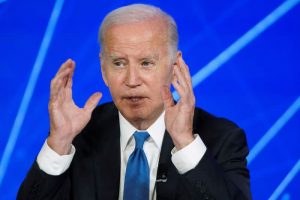Fear of inflation recedes further as Treasury yields hit four-month low after Federal Reserve meeting details are released
(AF) The 10-year US Treasury yield fell to 1.30% on Wednesday June 7 after the release of minutes of the last Federal Reserve meeting. Inflation fears seem to be receding as the benchmark closed almost 0.5% below a high earlier this year.
Major US equity indices closed at record levels as the threat of higher interest rates receded, though fears of slowing global growth partly explain the fall in Treasury yields.
A backdrop of slow but steady growth without fears of an inflation spike should be positive for global corporate bond demand, including Chinese debt that offers a significant yield pick-up compared to other markets – along with less volatility than stocks.
Federal Reserve officials last month said substantial further progress on the economic recovery “was generally seen as not having yet been met,” but agreed they should be poised to act if inflation risks materialised, according to the minutes of the central bank’s June policy meeting.
The minutes said that “various participants” at the June 15-16 meeting felt conditions for reducing the central bank’s asset purchases would be “met somewhat earlier than they had anticipated.”
That could have been taken as a bearish signal for the Treasury market.
But others saw mixed signals from data and said that reopening the economy after a pandemic left an unusual level of uncertainty which required a “patient” approach to any policy change, said the minutes, which were released during the afternoon of the US trading day on Wednesday.
That seemed to be the statement taken to heart by bond and equity markets on Wednesday, even though a “substantial majority” of officials saw inflation risks “tilted to the upside,” and the Fed as a whole felt it needed to be prepared to act if those risks materialised.
“Participants generally judged that, as a matter of prudent planning, it was important to be well positioned to reduce the pace of asset purchases, if appropriate, in response to unexpected economic developments, including faster-than anticipated progress toward the committee’s goals or the emergence of risks that could impede the attainment of the committee’s goals,” the minutes said, referring to the policy-setting Federal Open Market Committee (FOMC).
The minutes did not clarify when the Fed will begin to change the monthly bond purchases and near-zero interest rates it put in place in the spring of 2020 to support the economy through the coronavirus pandemic and associated recession.
But it did show debate over those policies, with Fed officials giving divergent set of views about the risks the economy faces, the level of uncertainty, and discussing details like whether to curb the purchase of mortgage-backed securities (MBS) faster than that of Treasuries, which was raised as an option by some committee members.
“Several other participants, however, commented that reducing the pace of Treasury and MBS purchases commensurately was preferable because this approach would be well aligned with the committee’s previous communications or because purchases of Treasury securities and MBS both provide accommodation through their influence on broader financial conditions,” the minutes said, in another sign of the cautious pace at which the Fed is moving.
























